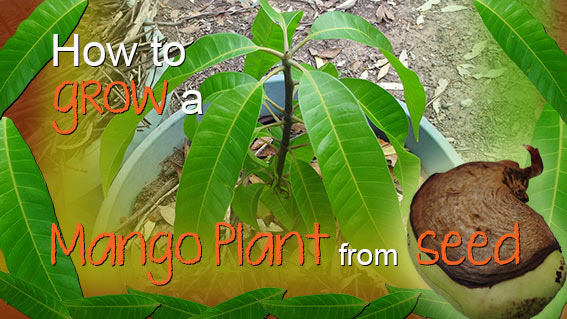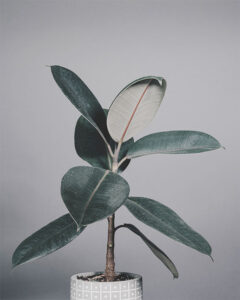Have you ever wondered whether you could grow a mango seed from the supermarket/fresh food market to plant in your garden or acreage? Well, I am here to tell you that it can be done! It worked for me, but of course not without many attempts and failures. Most of my failings were because the seed attracted mould and rot before it was able to germinate.
I’ve dabbled in gardening for quite a while now, and one thing is for certain: growing plants from seed can sometimes be tricky, especially when temperatures and climates aren’t ideal. They love to rot and mould very quickly at times. But I must say, there is nothing more satisfying than to watch your success as your mango seed germinates and grows into a hardy young tree.
It is said that mango plants grown from seed should fruit within 8 years, but there is no guarantee that it will fruit, unless you know how to graft them. 1 Buying them from a nursery will guarantee fruiting within 3-4 years. I cannot say whether mine will fruit as they are only a couple of years old and I have kept them in a pot since.
We are currently living in the “Sunshine State” –Queensland, Australia. Five minutes away from the beach makes it ideal for mango trees to flourish. Just driving close to the beachfront, the reserves and houses blossom with beautiful red flowers and then fruit during the summer months. All mango varieties fruit at different times of the year, usually during the hottest times of the year here in Australia. 2 When the trees are not flowering or fruiting, they make a very tall and attractive tree to grow on your property, but only if you live in a warm climate. They are hardy and strong and tolerate drought well, especially throughout last year (2019) when most of Australia was hit with drought for many months.
A couple of years ago I began my attempt at germinating Kensington Pride varieties from seeds. I was successful with two of them and now they grow in a pot outdoors.
Again, I had tried several attempts last summer with Kensington Pride, but most of them rotted before they could germinate. I concluded that this was due to the high humidity in our house during the summer. In my experience, I have found that high humidity in the air plus heat = early seed rot. So, I tried again and waited till the end of summer and I was finally successful with two seeds. Some say it is best to begin germinating at the start of summer for best results. Finally, I was able to germinate two seeds from scratch, but they were of the Palmer variety from the supermarket. You can keep these in a pot outside and eventually plant them out into the ground when they are large enough.
More info about mango trees…
Here is a little bit of research I did on the growing and care of mango trees.
The number of mangoes which will grow on a mature tree can vary depending on variety and temperature. One source states that if temperatures are below 10°C in the spring, this will reduce fruit set. 3 A different source states that mango trees flourish with flowers when the temperature drops at night during the spring. Without colder nights below 15°C, the crop will not be prolific that year. So all in all, the cold is good for a mango tree during the winter/spring, but only if it stays above 10 degrees Celsius. Below 10°C flowering pollen viability is affected, and young fruitlets may be damaged. 7
One of the best varieties to grow from seed is the Kensington Pride variety because it is a polyembryonic variety. This means that the seed will be identical to the parent tree. There are other varieties in Australia that would also be suitable for growing such as R2E2, and Edward, Haden, Namdok Mai, and Kent. 4 If you do a search on the internet, you can check your own location for specific varieties that would be ideal to plant for you.
The sap of the mango tree can cause skin irritation, so avoid getting any on your skin or on the mangos themselves so not to burn the skin of the mango. They can grow up to 35 m (over 100 feet) high and 15 m (45 feet) across for seedling trees of older varieties! That is one tall tree! 5 It is recommended that when they grow to a considerable height, especially when they begin to flower and then bear fruit, to prune them back. You could get away with not pruning the tree and they would still grow fruit, but it would be more difficult for harvesting. Apparently, they are very forgiving and grow back easily if pruned too heavily.
They are easy to grow and require low maintenance too, as they don’t need fertile soil to grow, although for healthy fruit growth they do benefit from fertilising, composting and mulching. In heavy rain they can be prone to anthracnose fungal disease. Young trees can be watered regularly and can be lightly fertilised when it is fruiting season. As they get older, they don’t need as much watering.
Mine needed more watering in the summer months, but they are quite hardy even as young trees and can withstand it if you miss a few days of watering. Just don’t overdo it. I usually just check the soil and if it feels dry, go ahead and water it. I cover the top of the pot with mulch to prevent it from drying out.
Keeping them in pots?
As for keeping a pot indoors all year round, I am unsure if they will grow successfully. Although I keep my trees in a pot outside, I cannot say from experience that it would still grow strong and healthy if I kept it indoors all year round. Experiment and try for yourself. I can say, however, that I did leave my first two mango seeds on top of the fridge for about a month without sunlight and they grew perfectly well for the time they were there. If you have frost-free winters or live in a warm sub-tropical/tropical climate, then you could safely grow a mango tree in the ground or keep it in a pot outdoors. For cooler climates, you could try growing in a pot and transferring between inside of the house during cool months and outdoors in the summer. Just remember to keep the mango plant protected from cold temperatures below 5°C.
It is best to plant them outside when they are about a metre tall, as younger plants are vulnerable to cold weather and frost. 6
How I grew them…
Ok, so these are the steps to my success.
1. I think it is best to germinate the seed when ambient humidity is lower during the hotter months, such as in late spring and early or late summer. The first thing you need to do is choose a variety you are keen to grow. Then, when the mango is ripe and firm, get rid of the flesh until you get to the husk: the white, furry seed you see in the centre of the mango.
2. At this point, the husk is very slippery and wet. It’s a slippery little sucker and is guaranteed to fly right out of your hands and onto the kitchen floor. It is best to dry the husk out enough so you can easily cut it open. I put the seed in the fridge for about a day or two to dehydrate it. I think it is a good idea to put it in the fridge to help keep insects away and it will also guarantee the drying process will be even. You should not put it in the sun to dry as it would be prone to rotting. Trust me, I’ve tried…
3. After a day or two, you should use heavy duty scissors or a knife (if you are very careful to keep fingers away) on the edges of the husk. Be careful not to cut into the seed that awaits inside. Keep the cut to the edges as much as possible. From there, you can use the opening as leverage to stick your fingers in the inside of the opening and pull and rip the husk away from the seed entirely. Or you could place scissor blades inside of the opening and cut further along the edges. Find the best method that works for you.
Sometimes, I have found some seeds to have rotten brown patches on them. In those cases, I would reject these and select other mango seeds that look strong and fresh for better germination.
After you have chosen some seeds that you are happy with, wrap them in paper towels. Now spray them in water or colloidal silver if you have any. I have found that spraying them with silver colloid is ideal for keeping away mould growth.
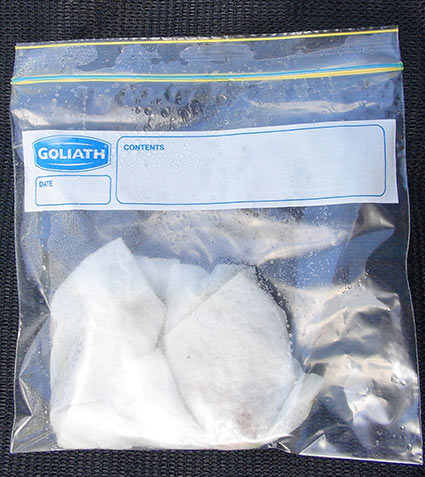
4. The next step is to place the seed in a zip lock bag. That’s it! Now, let them sit in a spot that is not too humid but warm enough to germinate. Don’t place them in full sunlight.
Check the seeds in the zip lock bag for drying out. You’ll want to make sure the paper towel stays damp. Because they are contained within plastic, they should not really dry out, but you should always check to make sure.
Slowly but surely, after about a week or so, you should start to see the seed change colour to bright green, then you will see the burgundy roots come through. The germination process can be really intriguing to watch, and it’s a great opportunity to teach our home-schooling kids about germination in real life!
5. When roots really begin to show (about an inch or so in size) is about the time I transfer them to a pot and lightly covered them with soil. I used regular potting mix.
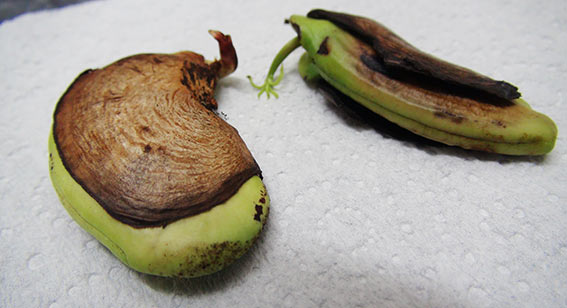
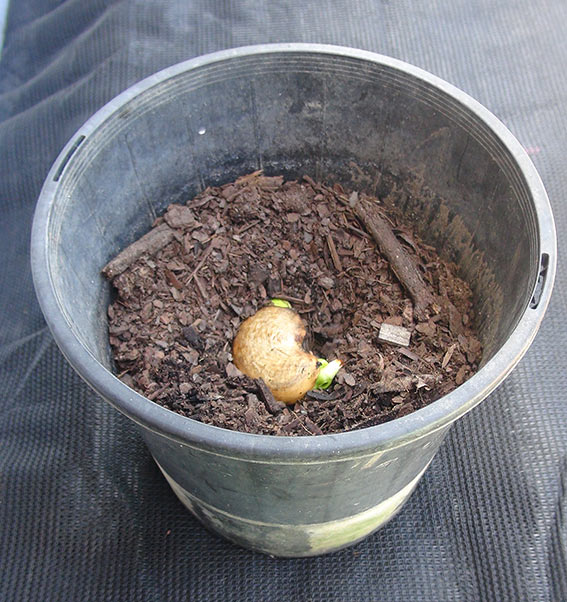
At this point, I kept them outdoors in a shady position but away from direct sunlight. Water them only when the soil feels dry to the touch.
6. After the first leaves have sprouted, it is now a good idea to mulch the pot to retain moisture in the soil.
This is what the mango plants began to look like after I had planted them out.
Remember to have fun! If you do get a few failures (like I did), keep on trying! Also, try other varieties.
I would love to hear about your mango seed planting journey! Have you had success in growing potted mango plants indoors all year round? Comment below and share your experiences.
References:
1,5. https://www.tropicalpermaculture.com/growing-mangoes.html
2. https://mangoes.net.au/mango-tips/availability/
3. https://www.bhg.com.au/mango-trees-how-to-grow-a-mango-tree
4,6. https://www.gallifreypermaculture.com.au/2015/12/polyembryonic-seeds/
6. https://www.dpi.nsw.gov.au/__data/assets/pdf_file/0006/119787/mango-growing.pdf

